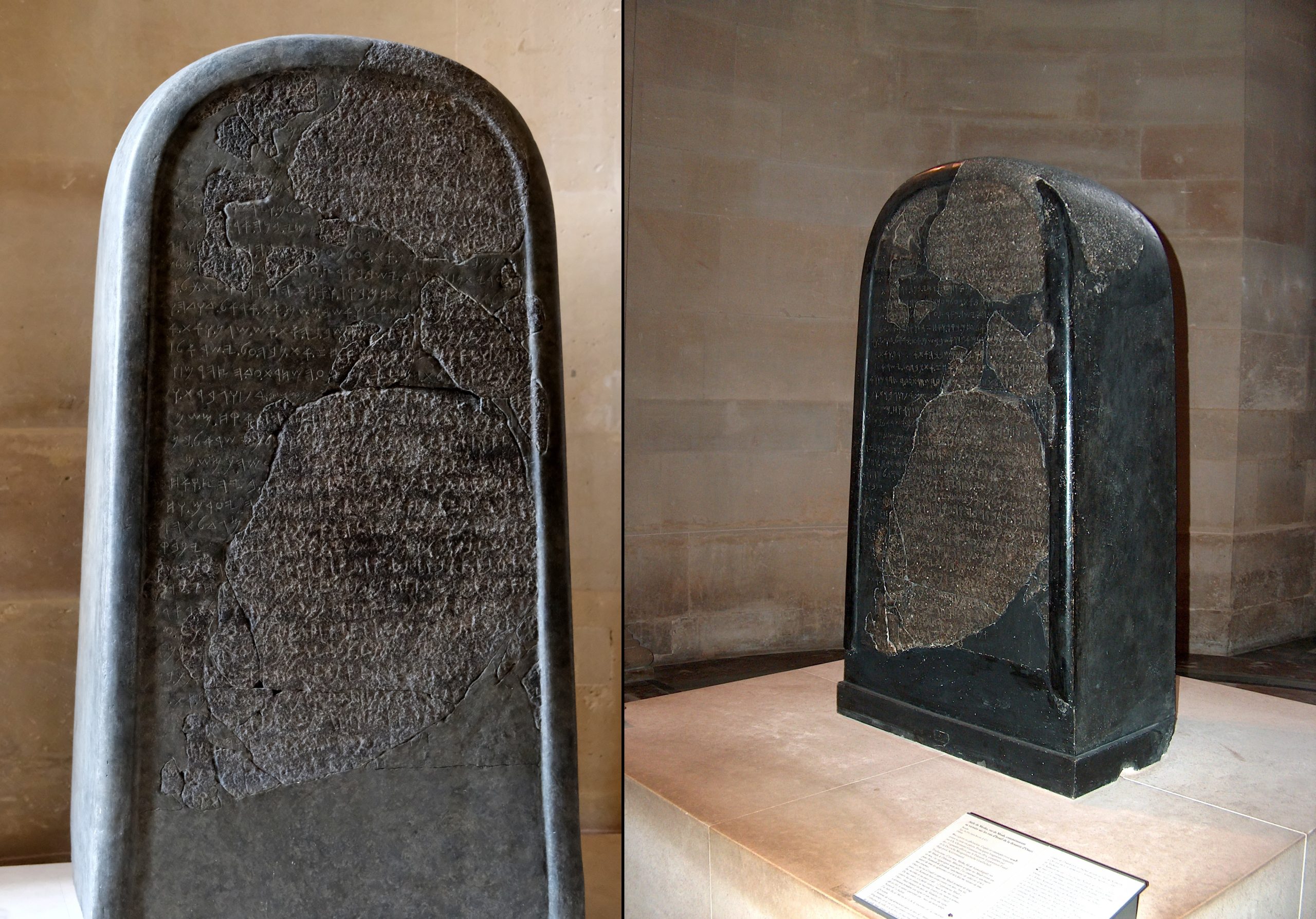
Chris Lange, FISM News
[elfsight_social_share_buttons id=”1″]
A recent technological breakthrough has further established the veracity of Scripture as a reliable historical document.
Scholars studying the Mesha Stele, also referred to as the Moabite Stone, recently confirmed that it contains clear references to King David, presumably ending years-long and often heated debate over the possible misidentification of the phrase “House of David” contained thereon.
The Mesha Stele is a stone of black basalt, which archeologists have traced back to 840 B.C. The artifact, currently housed at the Louvre Museum in Paris, France, stands roughly three feet tall and two feet wide and contains 34 lines of text, making it the longest ancient inscription ever found on a monument in the border region of Israel and Jordan.
The “House of David” debate centered around a portion of the inscription that was damaged in 1869 and rendered partially unreadable. Fortunately, researchers had made a paper-mâché impression, also known as a “squeeze,” of the inscription that predated the damage.
Two French scholars, Andre Lemaire and Jean-Philippe Delorme, announced on Jan. 20 that they were able to re-examine the squeeze using a technology called Reflectance Transformation Imaging (RTI). RTI involves combining multiple photographs of an artifact taken with light projected from different directions that reveal features that aren’t visible to the naked eye. The researchers were able to confirm the presence of the text “house of David” on the 31st line of the text.
“These insights … not only confirm that the Mesha Stele references the ‘House of David’ but also allow us to draw new conclusions about the various historical and biblical events described in the text,” the historians said of their translation in the January 2023 edition of Biblical Archaeological Review.
The Mesha Stele was discovered intact in Jordan near the Dead Sea, the biblical site of Moab, in 1868 by Anglican missionary Frederick Augustus Klein. The stele was commissioned by King Mesha of Moab and displayed in his capital city of Dibon, according to the article. It chronicles King Mesha’s military victories over his enemies, including Israel and Judah, or the “House of David.”
The “House of David” inscription on the artifact consists of five letters: btdwd. The “bt” translates as “house of” and “dwd” translates as “David.” Prior to the RTI testing, only the first and fourth letters were visible.
According to a report by Patterns of Evidence, the inscription also includes one of the oldest known references to “YHWH,” the ancient Hebrew term for “God,” known to exist outside of the Bible. The carved text also includes the word “Israel” six times, as well as references to “Omri, king of Israel,” and “The men of Gad.”
The carved text is in the language of Moabite, which bears striking similarities to ancient Hebrew.
“Moab and Israel had a long history of interchange and conflict in the Bible, with control of certain areas shifting back and forth over the centuries. In fact, the great-grandmother of King David was Ruth, a Moabite who emigrated to Judah,” the article states.
In addition to King Mesha’s battlefield conquests, the stele also references various building projects that took place in Moab under his direction.
Andre Lemaire’s full interpretation of the Mesha stele in its entirety can be viewed here.
